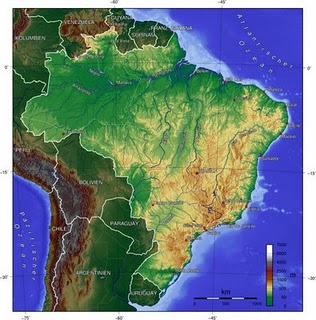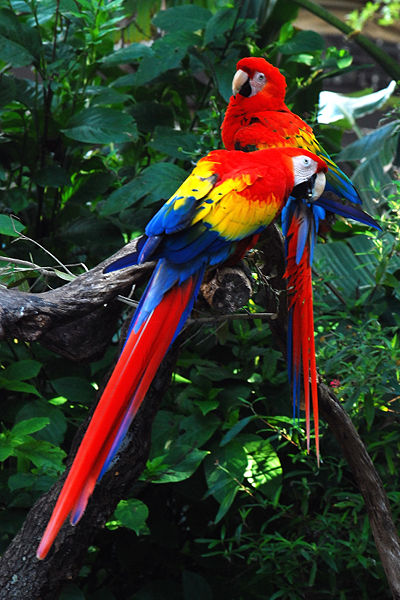The Amazon rainforest is the most well known geographical feature of Brazil's landscape. But the country is geographically diverse like most large countries tend to be. I don't know if it has a desert though. Looks like it maybe does.
Brazil - Wikipedia, the free encyclopedia The Portuguese encountered stone age natives divided into several tribes, most of whom shared the same Tupi-Guarani linguistic family, and fought among themselves ..... slavery was extinguished after a slow but steady process that began with the end of the international traffic in slaves in 1850 ...... in 1823, 29% of the Brazilian population were slaves but by 1887 this had fallen to 5% ..... the military coup, backed by former slave owners who resented the abolition of slavery ...... the Supreme Federal Tribunal was the first court in the world to transmit its sessions on television, and also via Youtube. ..... in December 2009, the Supreme Court adopted Twitter to display items on the day planner of the ministers, to inform the daily actions of the Court and the most important decisions made by them ....... Brazil's current foreign policy is based on the country's position as: a regional power in Latin America, a leader among developing countries, and an emerging world power. ...... the only navy in Latin America to operate an aircraft carrier ...... shares a border with every country in South America except for Ecuador and Chile. ... geographically diverse .... Brazil is the fifth largest country in the world, after Russia, Canada, China and the United States ..... Brazil has a dense and complex system of rivers, one of the world's most extensive, with eight major drainage basins, all of which drain into the Atlantic. Major rivers include the Amazon (the world's second-longest river and the largest in terms of volume of water) ..... most of the country is tropical ...... Many regions have starkly different microclimates. ..... The country has one of the world's most diverse populations of birds and amphibians. ...... the Amazon Rainforest, the largest tropical forest in the world.. ...... the Amazon Rainforest, recognized as having the greatest biological diversity in the world ..... The rich wildlife of Brazil reflects the variety of natural habitats. Much of it, however, remains largely undocumented, and new species are regularly found. Scientists estimate that the total number of plant and animal species in Brazil could approach four million...... At least 70 dams are said to be planned for the Amazon region ...... current GDP (PPP) per capita is $10,200 .... Brazil received an International Monetary Fund rescue package in mid-2002 of $30.4 billion, then a record sum. Brazil's central bank paid back the IMF loan in 2005, although it was not due to be repaid until 2006 ...... foreign direct investment (FDI), related to long-term, less speculative investment in production, is estimated to be $193.8 billion for 2007 ..... The recent economic strength has been due in part to a global boom in commodities prices with exports from beef to soybeans soaring ....... Itaipu Dam, the world's largest hydroelectric plant by energy generation and second-largest by installed capacity. ...... Industry, which is often technologically advanced, is highly concentrated in metropolitan São Paulo, Rio de Janeiro, Campinas, Porto Alegre, and Belo Horizonte ..... the world's tenth largest energy consumer with much of its energy coming from renewable sources, particularly hydroelectricity and ethanol ....... is expected to become a major oil producer and exporter, having recently made huge oil discoveries ...... The Brazilian Space Agency has the most advanced space program in Latin America, with significant capabilities in launch vehicles, launch sites and satellite manufacturing ..... Uranium is enriched at the Resende Nuclear Fuel Factory to fuel the country's energy demands and plans are underway to build the country's first nuclear submarine ...... a large and diverse transport network. ..... The São Paulo Metro was the first underground transit system in Brazil. The other metro systems are in Rio de Janeiro, Porto Alegre, Recife, Belo Horizonte, Brasília, Teresina, Fortaleza, and Salvador. ......



No comments:
Post a Comment